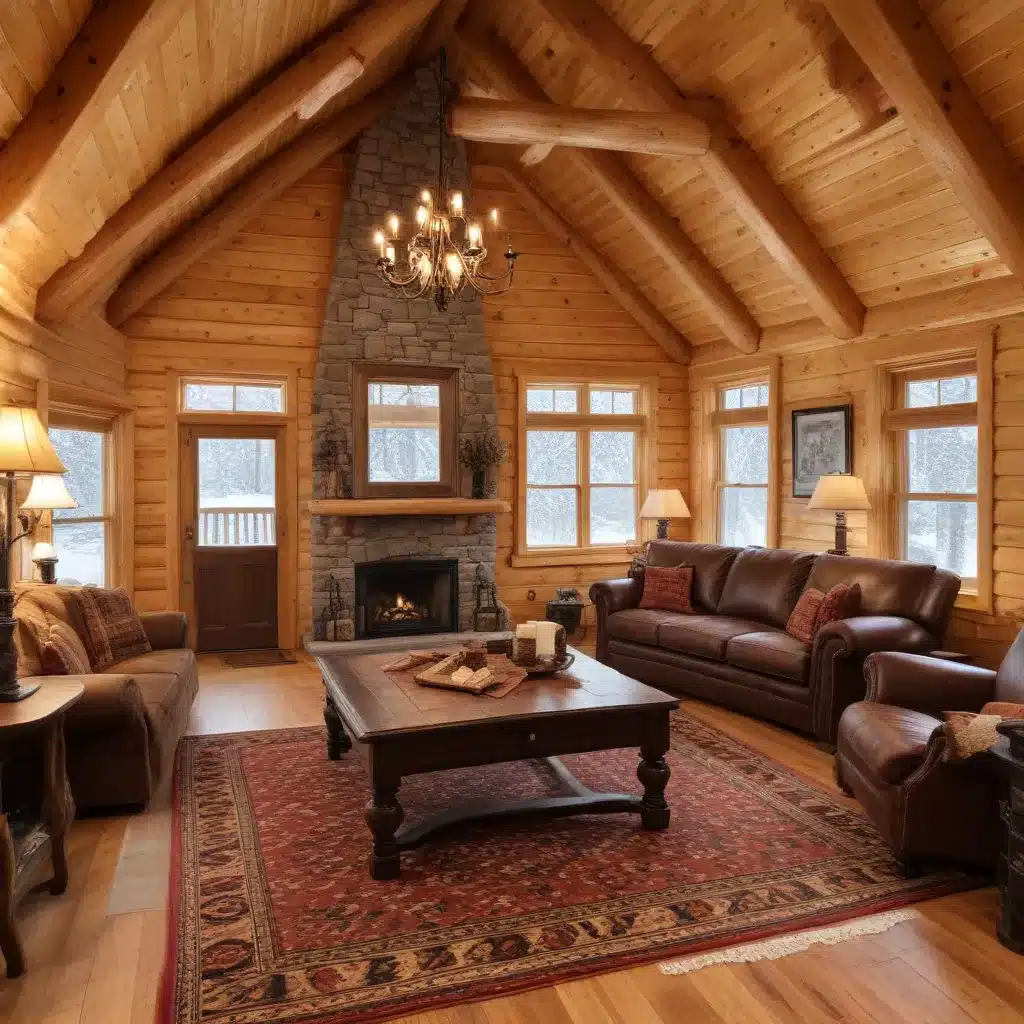
Embracing the Art of Ventilation in Log Homes
Designing a well-ventilated log home is crucial for maintaining a comfortable and energy-efficient living environment. Unlike traditional stick-frame construction, log homes present unique challenges when it comes to airflow and heat management. By understanding the principles of proper ventilation, homeowners and builders can create log homes that not only exude rustic charm but also optimize indoor air quality and energy efficiency.
One of the key considerations in log home ventilation is the concept of “air exchange.” In a tightly sealed log structure, it’s essential to facilitate a regular exchange of fresh outdoor air with the indoor environment. This air exchange serves multiple purposes, including replenishing oxygen, removing stale or humid air, and preventing the buildup of potential pollutants. Striking the right balance between air-tightness and ventilation is a delicate art that requires careful planning and execution.
Strategically Placed Vents and Openings
The placement and design of vents and openings play a critical role in achieving optimal ventilation. Log home builders often incorporate a combination of passive and active ventilation systems to ensure a continuous flow of fresh air. Passive systems, such as adjustable vents or operable windows, allow natural convection to drive air circulation. Active systems, like exhaust fans or energy-recovery ventilators, provide a more controlled and efficient air exchange.
Positioning vents and openings on opposite walls or at different elevations can create a “stack effect,” where warm air rises and exits through high-level vents while cooler air is drawn in through low-level openings. This natural airflow pattern helps distribute heat evenly throughout the log home, reducing temperature stratification and improving overall comfort.
Balancing Insulation and Ventilation
Log homes, with their thick, thermally-efficient walls, require a delicate balance between insulation and ventilation. Proper insulation helps maintain a consistent indoor temperature, but it can also inhibit air circulation if not paired with strategic ventilation strategies.
Insulation Techniques for Log Homes
One approach to improving the insulation-ventilation balance is the use of structural insulated panels (SIPs) or rigid foam insulation in conjunction with the log walls. These insulation methods create a continuous thermal barrier while allowing for the integration of ventilation channels or cavities within the wall assembly. This approach helps preserve the rustic aesthetic of log construction while enhancing energy efficiency.
Another technique is the incorporation of ventilated air spaces within the wall assembly. By creating a gap between the log walls and the interior finishes, homeowners can facilitate air circulation and minimize the risk of moisture buildup. This approach, coupled with strategic placement of vents and openings, can optimize the balance between insulation and ventilation.
Embracing Sustainable Building Materials
In addition to ventilation strategies, the selection of eco-friendly building materials is crucial for creating energy-efficient log homes. Homeowners and builders should consider the following sustainable options:
Locally-Sourced Logs
Choosing locally-sourced logs not only supports the regional economy but also reduces the environmental impact associated with long-distance transportation. Native tree species, such as pine, cedar, or Douglas fir, are well-suited for log home construction in many areas of the United States, offering a lower carbon footprint and enhanced durability.
Sustainable Insulation
Alongside the use of SIPs or rigid foam, log home builders can explore alternative insulation materials that prioritize sustainability. Options like blown-in cellulose, recycled denim, or natural fiber insulation provide excellent thermal performance while minimizing the environmental impact.
Energy-Efficient Windows and Doors
Selecting energy-efficient windows and doors is crucial for maintaining the thermal integrity of a log home. Triple-pane windows and high-performance doors with tight seals can significantly reduce heat loss and improve the overall energy efficiency of the structure.
Renewable Energy Integration
To further enhance the sustainability of a log home, homeowners can consider integrating renewable energy sources, such as solar photovoltaic panels or geothermal heat pumps. These technologies harness clean, renewable energy and can substantially reduce the home’s reliance on traditional fossil fuels.
Maintenance and Optimization
Maintaining a log home’s ventilation system and monitoring its energy performance are essential for ensuring long-term efficiency and comfort. Regular inspections, filter changes, and system adjustments can help homeowners optimize the performance of their log home over time.
Monitoring and Adjusting Ventilation
Homeowners should regularly assess the performance of their ventilation system, monitoring for any signs of imbalance or degradation. This may involve checking the operation of fans, adjusting vent openings, or cleaning air filters. By staying vigilant and making necessary adjustments, homeowners can maintain the optimal air exchange within their log home.
Energy Efficiency Assessments
Periodic energy efficiency assessments, conducted by qualified professionals, can help identify areas for improvement in a log home’s thermal performance. These assessments may include thermographic scans, blower door tests, and energy modeling to pinpoint opportunities for upgrading insulation, sealing air leaks, or enhancing the ventilation system.
By embracing the principles of proper ventilation, sustainable building materials, and ongoing maintenance, homeowners can create log homes that not only exude rustic charm but also prioritize energy efficiency and indoor air quality. This holistic approach to log home construction ensures a comfortable, healthy, and environmentally-friendly living experience for years to come.
Conclusion
Designing and maintaining a well-ventilated log home is a crucial aspect of creating a comfortable, energy-efficient, and sustainable living environment. By understanding the delicate balance between insulation and ventilation, leveraging eco-friendly building materials, and implementing strategic ventilation systems, homeowners and builders can optimize the performance of their log homes while preserving the inherent charm and character of log construction.
Through a comprehensive approach that addresses ventilation, energy efficiency, and sustainable practices, log home enthusiasts can enjoy the best of both worlds: the timeless beauty of rustic log construction and the benefits of a healthy, comfortable, and environmentally-conscious living space. By embracing these principles, the log home experience can be elevated to new heights, providing a sanctuary that seamlessly blends modern comforts with the enduring appeal of traditional craftsmanship.
To learn more about creating energy-efficient and sustainable log homes, visit Jørgensen Log Homes, a leading provider of custom log home solutions and timber frame construction expertise.


